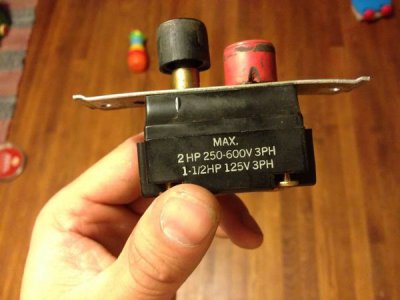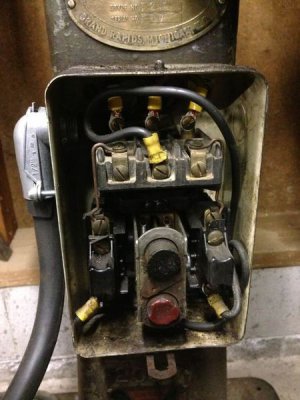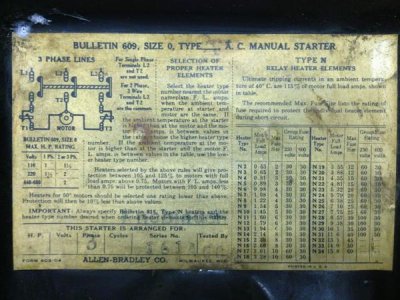- Joined
- Apr 19, 2013
- Messages
- 78
Since your phase converter is powered by single phase, you only need a 2 pole switch, or contactor.....whichever you choose. It is not necessary to have a contactor if you have a heavy enough switch, BUT, it would be more convenient to use one. In that case, you would set up your push button station to energize the coil on the 2 pole contactor (relay with heater). You will need to either use a contactor with an adjustable heater, or a properly sized fixed heater.
Can you give us the make and model of the phase converter? I'd like to see the schematic for it before I give further advice.
Tony the make and model is here .
http://www.dempseyandco.com/phase_converters.htm
It's a local company and he did not give me a full schematic of the internals so tomorrow I am going to see him about it. I didn't realise motor starters cost so much money!
Anyways I did a little research on the parts inside the converter and I'm learning a lot doing so. The item in the top left corner is a motor starter it is a Allen Bradley bulletin 709 size 1 , 3 phase starter . So it looks like I already have relays and a starter . The key is now if I can use this switch with it . That's why I want to go see the guy who built it. He is kinda of a simple guy so he may give me crap about wanting to use the extra push button station. I hope not because I will get a little irritated . Am I right in my thinking of having a separate start stop seperate from the fused disconnect ?
Reading about why a motor starter is used it seems like their only purpose is to allow use of small buttons instead of a large switch and as a result they can put switches anywhere they want rather than have a big switch . With this phase converter being mounted to the wall and no need for the switch to be in a tight or small location there is no need . Although a motor starter still sits in the phase converter yet with no switches ... I just don't know enough . Hopefully tomorrow will shed some light .




